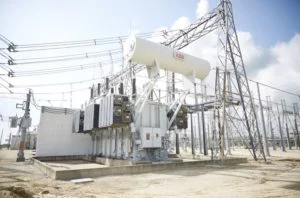Transformers are rated in kVA or VA and not in kilowatts. While electric loads such as motors, lamps, heaters, etc. are always rated in kW, equipment used for power generation and transmission (generators and transformers) are rated in kVA. This article illustrates why are transformers rated in kVA and why not it is rated in kW.

Any piece of electrical equipment is rated based on how much current it can handle at a particular voltage and the losses occurring in it. The same applies to power transformers also. Transformers are rated based on the maximum power that they can transfer from their primary side to the secondary side while taking losses into account and are rated in VA, kVA, or MVA and never in KW.
KVA stands for kilo-volt-ampere, which basically is the unit of electric power. While calculating the kVA of any piece of equipment the power factor is not taken into account.
(i.e.) Power in kVA = Voltage x Current.
This means kVA is the unit of measurement for that equipment in which the output power is independent of the power factor. For example Rating of Alternators, Transformers, UPS, etc.
On the other hand, KW (KiloWatts) is also the unit of electric power for that equipment in which the power factor plays a role. Normally machines that produce a mechanical output are rated in kilowatts. For example the rating of electric motors.
Why are transformers rated in KVA but not in KW?

Transformers are energy transfer device that transfers power from the primary side to the secondary side without altering the energy level (considering zero power loss). Iron loss and copper loss occurring in the transformer are also independent of the power factor. Moreover, the output power factor of the transformer purely depends on the connected load. The transformer does not alter the power factor of its output power.
Below are the two reasons why are transformers rated in kVA and not in kW:
- Transformers are rated in kVA because the losses occurring in the transformers are independent of the power factor.
- The loads that will be connected to the transformer are never known to the manufacturer at the time of transformer design. Hence it cannot be rated in kW. The load kW depends on the power factor of the load.
KVA is the unit of apparent power. It is a combination of real power and reactive power. Transformers are manufactured without considering the load being connected. So any kind of electrical load can be connected to it (either resistive, capacitive, inductive, or combination loads). If the transformer is rated in KW, there may be confusion regarding the type of load being connected. This is why the transformer is rated in KVA. By doing so we can eliminate the confusion regarding the type of load being connected.
Summary
- The transformer does not produce any mechanical output.
- The output and the losses occurring in a transformer are independent of the power factor of the input supply.
- It does not have an impact on the power factor of the circuit in which it is used.
- The power factor of the transformer’s output current is determined by the load connected to it.
- Therefore it is a common practice to rate transformers in kVA which is the product of rated voltage and the maximum current winding can carry.


thanks very much
pls help me with this question: Apart from the long distance of transmission cables; what other reason do we step up current at generation/sub stations before transmission.
A larger voltage requires a smaller conductor making the transmission less expensive
Another important thing Emmanuel is We step up voltages so that we have low current since they are inversly proportion remember ohms law. You know what you can wornder the current in transmission can be almost 20 amp .imagine the current in transmission be almost 1000amp eventually the cable will burn and they should be required a huge cable.
pls help me with this question: Apart from the long distance of transmission cables; what other reason do we step up current at generation/sub stations before transmission.
thanks…
To balance the loss of voltage while transferring and receiving the input.
The cables does offer resistance to the flow of current and it would need high supply to oppose it
how does power factor works in loads shedding and urban areas especially in high density?
thanks much, the notes are short and clear.
Your comment here… thank you so much
thank you so much